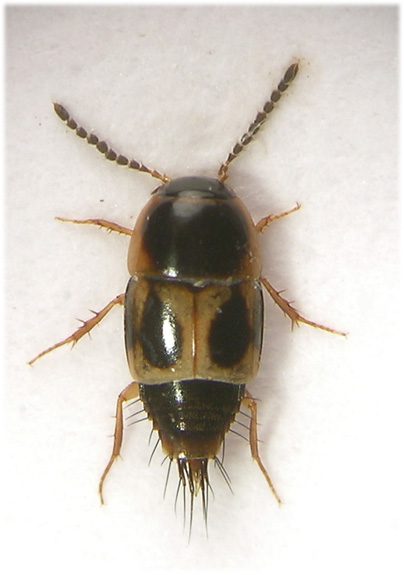
Occurs throughout England, Wales and southern Scotland (Joy) and described by Hinton (1945) as simply 'cosmopolitan'. Cilea is a local and often locally common insect associated with decaying vegetable matter. Fowler (1888) quotes the species from dungheaps and hotbeds and we have recorded them from much the same habitats locally; they are common in cattle dung on Common moor and horse dung from the bridleways in Whippendell wood and also occasionally from recently composed grass cuttings in town centre gardens and among extractions from deep within piles of rotting pond clearance vegetation below Cassiobury park. We have recorded them from dung from late April through to mid August ¹, the species seems to be most abundant from mid July onwards. They fly readily and have been seen during hot July weather to alight in numbers on dung within an hour of being laid. In our experience samples need to be pulled apart and sieved as they burrow deep and remain so when dsturbed.
Although very distinctly marked these small beetles are easily overlooked when sieving samples in the field; they move quickly and fly readily when disturbed and the elytral pattern becomes cryptic against the dung.
2.5-3.5mm. Broadly elongate and quite strongly convex, rounded anteriorly and with strongly tapering abdomen. Head, pronotum and elytra glabrous, pronotum and elytra without long lateral setae. Head black and shining with weak transverse microsculpture, eyes weakly convex and continuous with outline. Temples as long as long as eyes, narrowed behind but not visible with normal setting. Antennae 11 segmented, black with two basal segments testaceous, inserted under front margin of head. Pronotum transverse (around 5:3), smoothly rounded laterally with front angles rounded and protruding. Broadly testaceous laterally, narrowly so along anterior and basal margin, finely and very sparsely punctured and with transverse microsculpture which is a little stronger than on the head. Scutellum large, microsculptured as pronotum. Elytra transverse (5.5:4), sides evenly rounded and strongly bordered, suture simple i.e. not raised and distinctly patterned although almost completely black specimens occur (Hinton,1945). Without transverse microsculpture, finely punctate and weakly rugose. Abdomen very finely punctate and pubescent, black with hind margin of segments testaceous and with a long setae laterally on segments 1-5, these setae are not inside the raised side borders. Legs yellow, tibiae with strong spurs. Tarsi 5-5-5.
¹ At the time of writing we have very limited experence of sampling dung for staphs beyond August.
Description from 2 Watford specimens at X40

Home